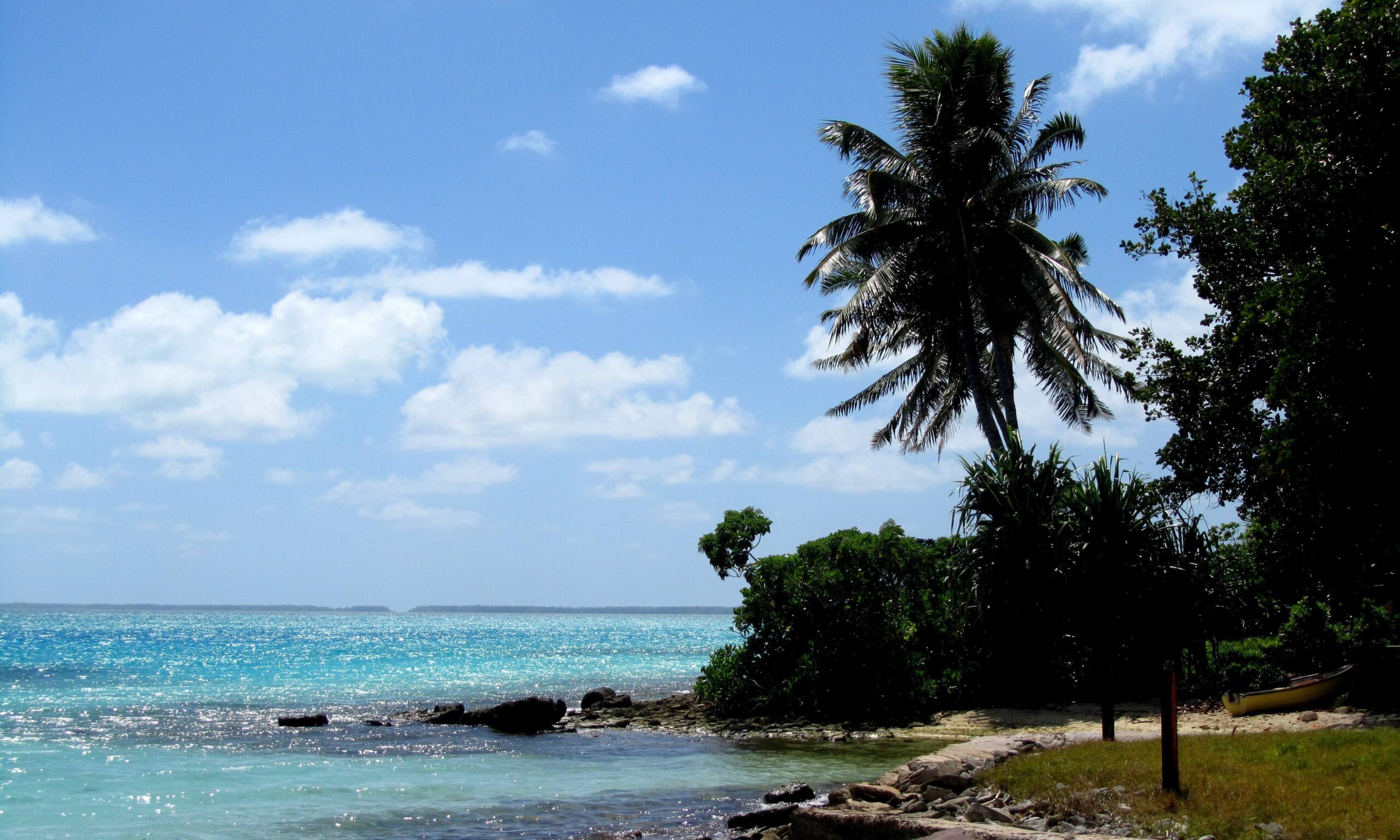Discover Kiribati

Where the sun rises first, and the Pacific speaks with silence
Kiribati (pronounced Kir-ee-bas) is unlike any other destination in the South Pacific. Spread across three vast island groups and straddling the equator and International Date Line, it’s a country of extremes: isolated, untouched, and deeply connected to the ocean. With its flat coral atolls, traditional lifestyles, and proud Micronesian culture, Kiribati offers travelers a rare chance to experience a truly authentic Pacific way of life — far removed from tourist crowds, cruise ships, or luxury resorts.
Traveling to Kiribati is not about sightseeing checklists — it’s about slowing down, engaging with the people, and witnessing the resilience of communities who live with the ocean at their doorstep. From the historic battlegrounds of Tarawa to the wild atolls of the Line Islands and Phoenix group, Kiribati is a journey into deep time and quiet beauty.
How to Get to Kiribati
Most international travelers arrive at Bonriki International Airport (TRW) on Tarawa, the capital atoll in the Gilbert Islands group.
- From Fiji (Nadi): Regular flights with Fiji Airways.
- From Tuvalu or the Marshall Islands: Limited regional flights (subject to seasonal changes).
- From the U.S. (Hawaii) to Kiritimati (Christmas Island): Air travel is limited and not always year-round — check with Hawaiian Airlines or charter services.
Domestic flights are operated by Air Kiribati, but schedules can be irregular and weather-dependent. Kiritimati (Christmas Island), part of the Line Islands, has its own airport and functions separately from Tarawa — traveling between the two requires significant planning.
What to See in Kiribati
Kiribati is not built around tourist attractions, but rather lived-in landscapes and natural environments. The Gilbert Islands, including South Tarawa, are the most populated and accessible. Here you’ll find:
- World War II relics: South Tarawa was the site of the bloody Battle of Tarawa in 1943. Remnants of bunkers, shipwrecks, and memorials remain.
- Te Umanibong cultural center: Displays Kiribati traditions, artifacts, and crafts.
- Lagoon shores and causeways: Explore the string of islets connected by bridges and roads, where daily life unfolds on land barely above sea level.
In contrast, the Phoenix Islands Protected Area (PIPA) is one of the largest marine reserves in the world, home to rare birds, pristine coral reefs, and atolls visited only by scientists and conservationists. It’s difficult to reach, but a bucket-list dream for eco-travelers.
Kiritimati (Christmas Island) is the largest coral atoll on Earth and a magnet for sport fishers, birdwatchers, and surfers. With no crowds, no chain hotels, and very limited infrastructure, it offers incredible solitude and world-class bonefishing in its tidal flats.
What to Do in Kiribati
Experiences in Kiribati revolve around local life, nature, and self-reliance.
Spend time in a village and learn about daily life, fishing traditions, and local customs. Participate in te bwai ni bwebwe (communal gatherings), enjoy a meal of fresh coconut crab or breadfruit, and witness traditional dance and storytelling, especially during national celebrations.
Outdoor activities include kayaking, paddling in traditional canoes, and exploring inner lagoons. Snorkeling is possible around some atolls, though coral quality varies depending on the island. On Kiritimati, fly fishing is the main draw, attracting serious anglers from around the world in search of giant trevally and bonefish.
Hikers and birders will enjoy coastal walks and wetland areas, particularly on Kiritimati and Abemama, where endemic bird species can be spotted.
When to Visit Kiribati
Kiribati has a tropical marine climate, warm and humid year-round.
- Dry season: May to November — ideal for fishing and outdoor exploration.
- Wet season: December to April — brings occasional heavy rains and storms, especially to the Gilbert Islands.
Due to its location, Kiritimati experiences slightly different weather patterns and is generally drier than Tarawa.
Travel Tips for Kiribati
- Currency: Australian Dollar (AUD)
- Language: English (official), I-Kiribati (widely spoken)
- Connectivity: Internet is slow and limited outside of government offices or hotels.
- Transport: Few paved roads; shared minibuses are common in Tarawa. Travel to outer islands requires patience.
- Accommodation: Expect basic guesthouses and lodges. Book ahead — there are no resorts or chains.
Kiribati is not for everyone — and that’s exactly why it’s special. For travelers seeking untouched nature, cultural authenticity, and the raw reality of life in the Pacific, it offers something increasingly rare in the modern world: genuineness. Whether standing at the edge of a WWII relic in Tarawa or casting a line into the endless flats of Kiritimati, you’ll feel like you’re somewhere few others have been. And perhaps most importantly — somewhere that truly matters.